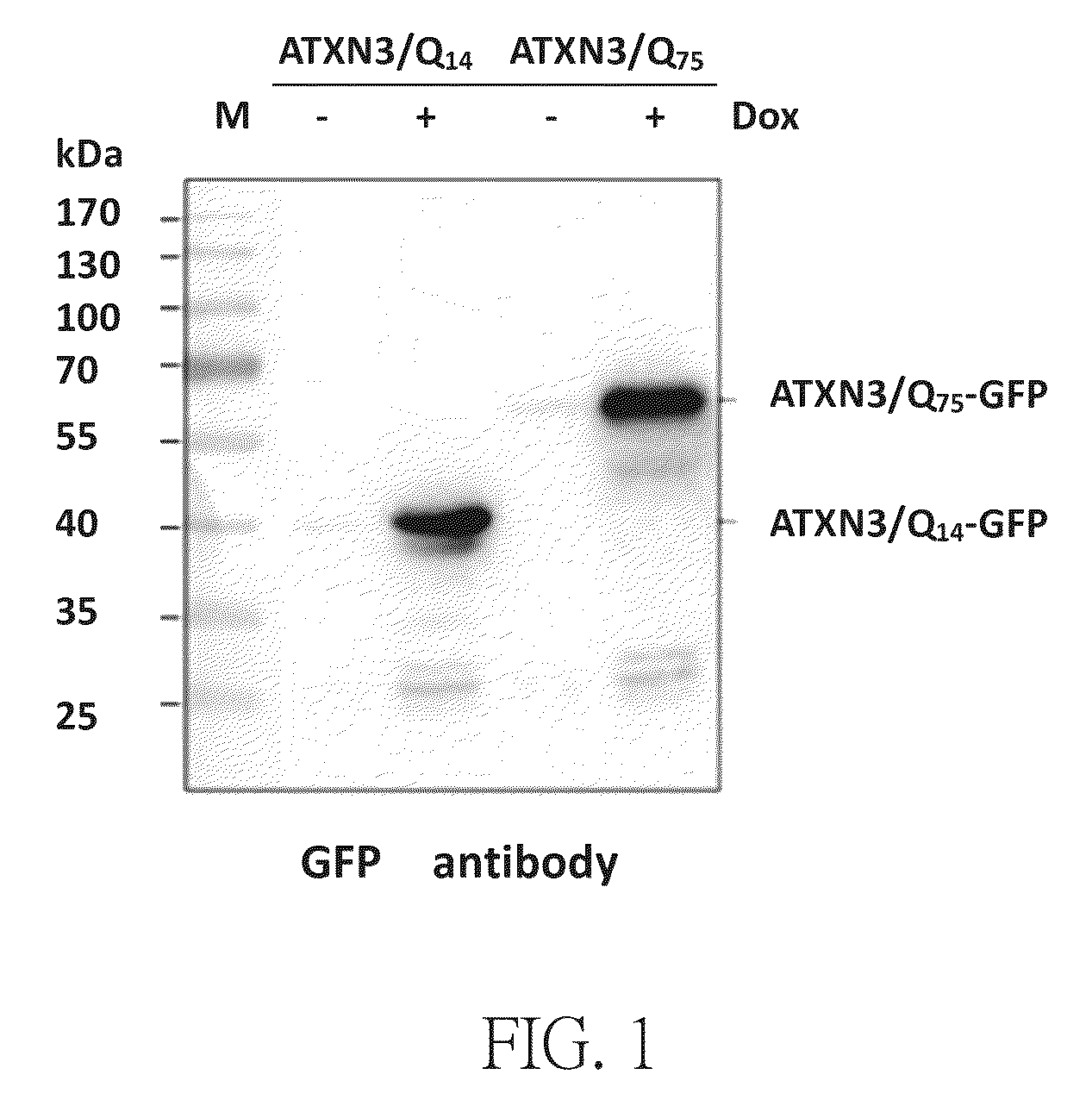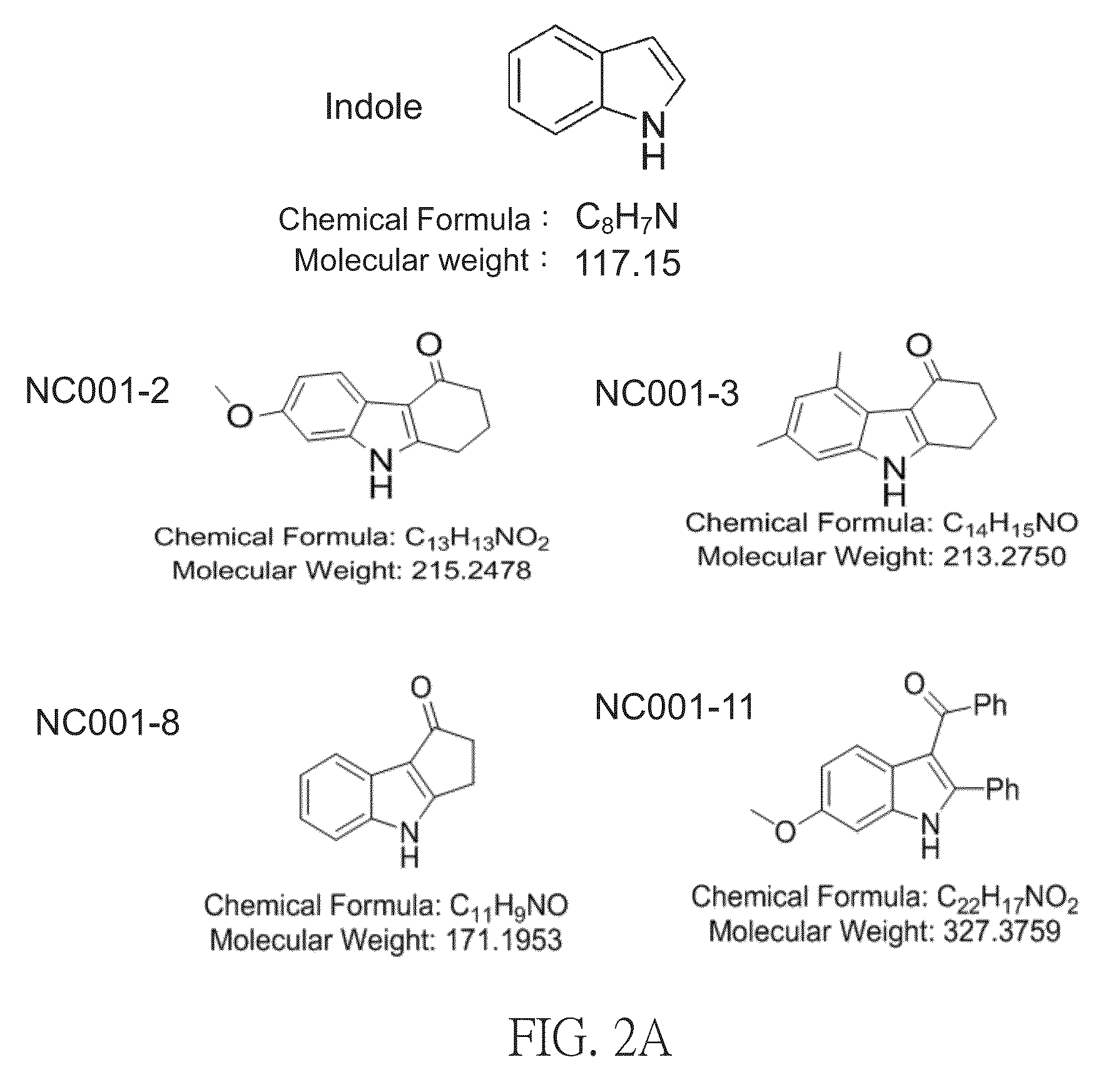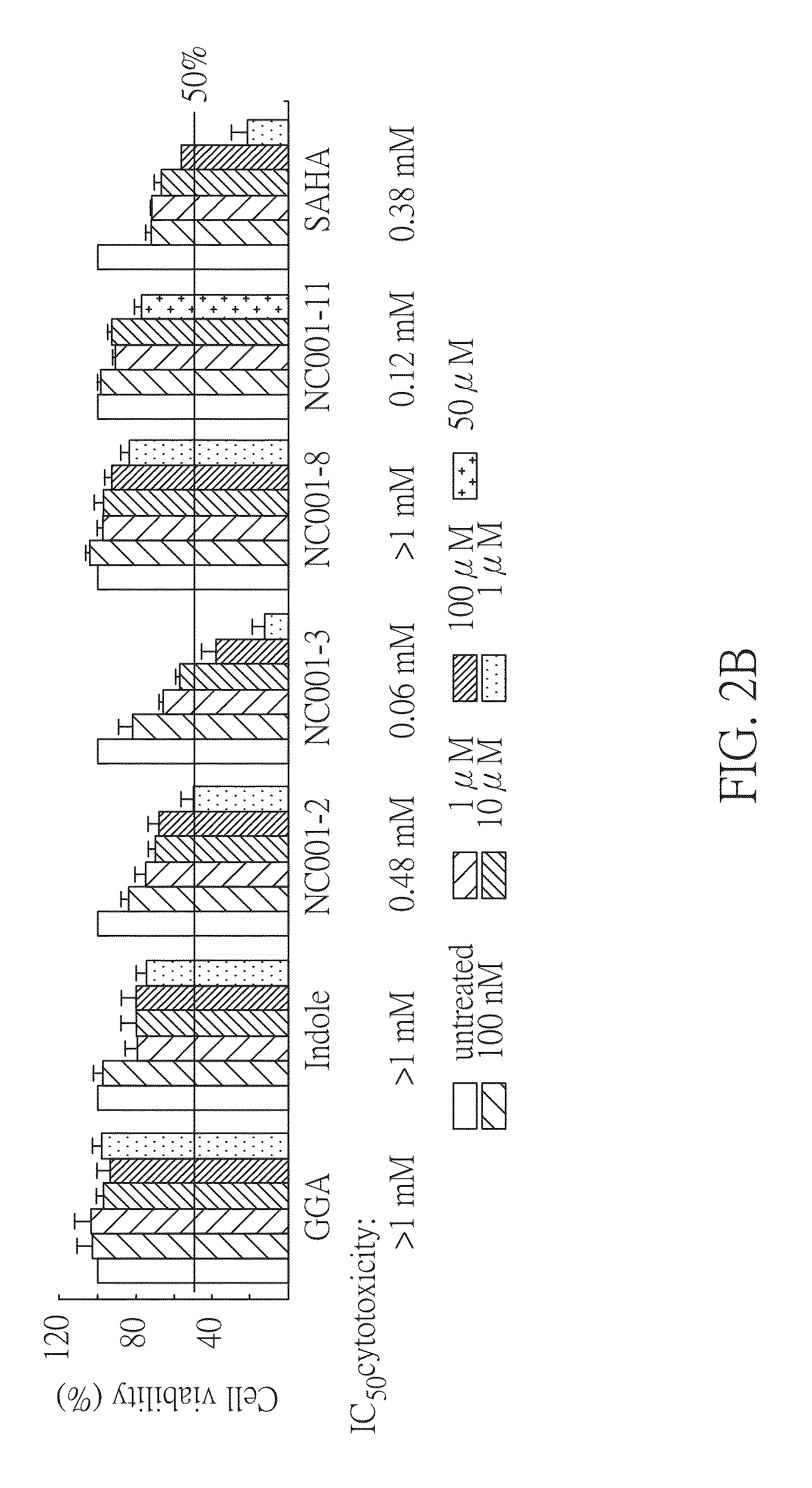Method for treating abnormal polyglutamine-mediated disease
a polyglutamine-mediated disease and polyglutamine technology, applied in the field of abnormal polyglutamine-mediated disease, can solve the problems of bringing patients to an end with death, achieve enhanced autophagy activity, enhance chaperone activity, and reduce polyglutamine misfolding and subsequent aggregation
- Summary
- Abstract
- Description
- Claims
- Application Information
AI Technical Summary
Benefits of technology
Problems solved by technology
Method used
Image
Examples
Embodiment Construction
[0045][Indole and Derivatives Thereof]
[0046]We used indole (commercial available) and synthesized derivatives (NC001-2, NC001-3, NC001-8 and NC001-11) thereof. First, 1.0 eq. 1,3-cyclopentanedione, 1.5 eq. anhydrous potassium carbonate, and 0.5 eq. o-iodonitrobenzene were placed in proper amounts of dimethyl sulfoxide, and heated under 85-90° C. for 4 hours. After the reaction was completed, the solution was cooled down to the room temperature and then poured into ice-cold saline solution. The solution was extracted with dichloromethane several times; and liquid extract of dichloromethane was washed using ice-cold saline solution, dried out using anhydrous magnesium sulphate, filtered, and concentrated. The liquid concentrate of mixture was purified and separated by flash column chromatography, and the intermediate, 2-(o-nitrobenzene)-1,3-cyclopentanedione or 3-hydroxy-2-(2-nitrophenyl)cyclopentenone, which are co-existed structural isomers, was obtained.
[0047]Next, 1.0 eq. 2-(o-nit...
PUM
| Property | Measurement | Unit |
|---|---|---|
| pore size | aaaaa | aaaaa |
| real time PCR | aaaaa | aaaaa |
| pharmaceutical composition | aaaaa | aaaaa |
Abstract
Description
Claims
Application Information
 Login to View More
Login to View More - R&D
- Intellectual Property
- Life Sciences
- Materials
- Tech Scout
- Unparalleled Data Quality
- Higher Quality Content
- 60% Fewer Hallucinations
Browse by: Latest US Patents, China's latest patents, Technical Efficacy Thesaurus, Application Domain, Technology Topic, Popular Technical Reports.
© 2025 PatSnap. All rights reserved.Legal|Privacy policy|Modern Slavery Act Transparency Statement|Sitemap|About US| Contact US: help@patsnap.com



